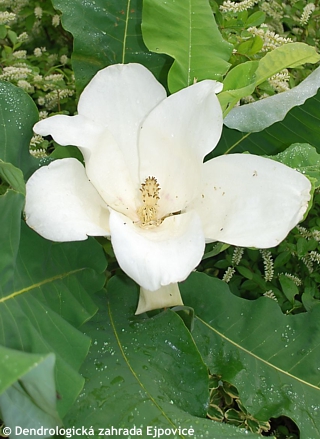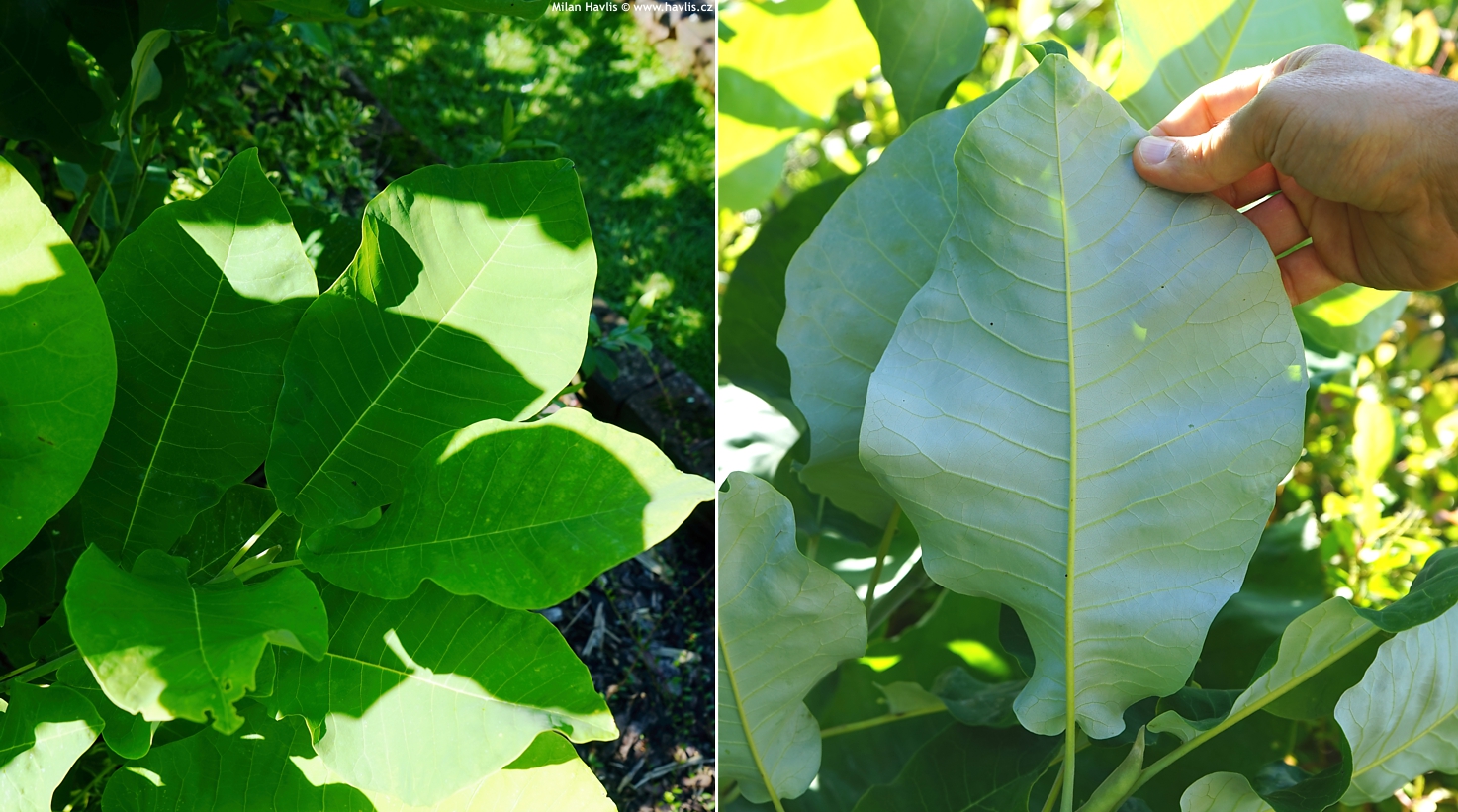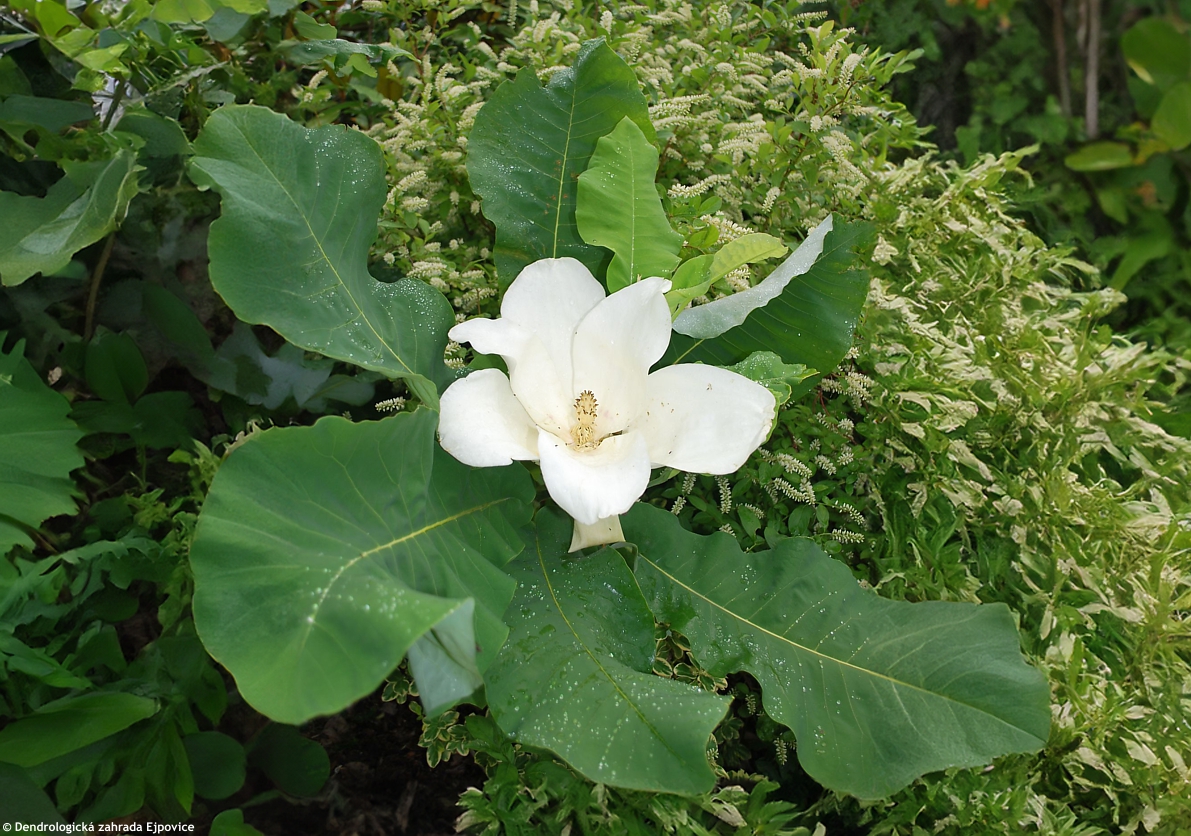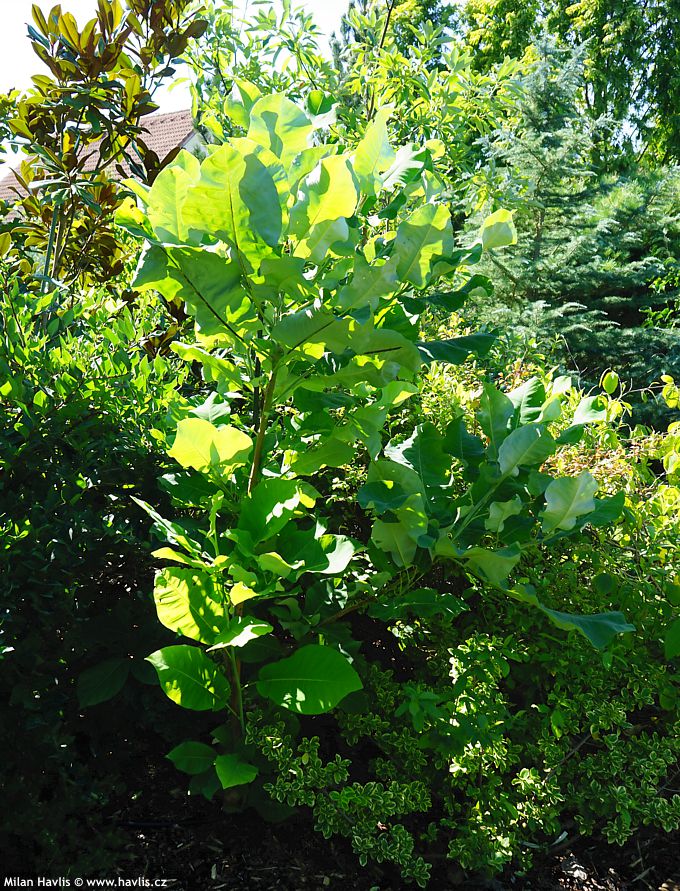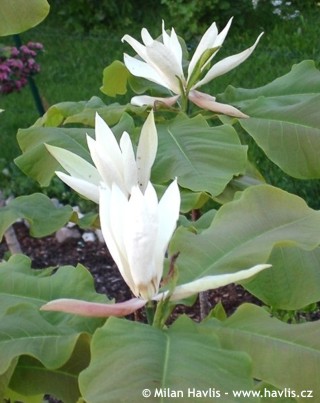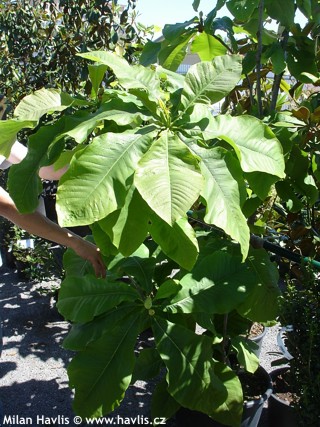Magnolia macrophylla ssp. ASHEI Ashe magnolia, bigleaf magnolia
size/type
small tree,taller shrub
usual height
3-4m
usual width
2-3m
leaves
deciduous broadleaf
colour of leaves
flowers
showy
colour of flowers
blooming time
May-June
location
full to partial sun
soil type
acidic (peaty) to neutral
soil moisture requirements
evenly moist (dislikes drought)
USDA zone (lowest)
7 (down to -23°C)
winter protection
for zone 5+6

for zone 7

categorized
Magnolia
Bigleaf magnolia is an American species native to the southeastern United States. It was first described and named by the French naturalist Andre Michaux after he had discovered it in 1789 during one of his expeditions in Charlotte, North Carolina. Later, there was a record of a similar discovery of an identical-looking tree by William Bartram in Alabama in 1775, i.e., 14 years earlier. Not one of them claimed the implementation of their name in the species name, therefore it remains "only" macrophylla. The men, already accomplished botanists, met in 1802 when Michaux visited Bartram’s botanical collection. He admired Bartram’s oak (quercus x heterophylla) which was discovered by William’s father, John. They became friends and corresponded with each other.Description of the plant:
Ashei is a rare subspecies of bigleaf magnolia popular for much smaller height compared to the species. Some even call it dwarf but given a height of 3 to 4 meters I would probably avoid with, but I can understand their need for labelling the difference. It was discovered by William Willard Ashe (1872-1932), an American naturalist and mainly forester, who was the first to advocate for the protection of nature and forests in the southern USA, that at a time when nature conservation, as we know and perceive it today, was a field as surprising as a historical debate over whether the Earth is flat or round. As if he was already aware of the danger of extinction that some species may face, he diligently collected plant samples to preserve them not only in herbariums, but also alive, when he grew them on plots where they could flourish unharmed. During his lifetime he recognized and named 510 new plant species.Magnolia ashei boasts large flowers composed of 6 to 8 creamy white petals. Individual petals are up to 15 cm long, but since the flower rarely opens wide and the petals are curved, the span of the entire bloom is never 2 x 15 cm. The flowers have a strong and sweet perfume and resemble those of bull bay magnolia. By flowering in late spring, they avoid late frosts that can endanger only early blooming species. The flowers are produced at the tips of mature branches = beware or pruning. They are followed by scarlet orange-red, glossy seeds in large cones in autumn.
Without any exaggeration its leaves are monstrous. They are deciduous, typically 50-60 cm long but in optimal conditions they can reach up to 90 cm in length and 20-30 cm in width. They are obovate, deep green above and silvery below. Ashe magnolia grows fast when young (40-60 cm per year) into a sparsely branched shrub with a central leader, and once it reaches about 2 meters, it slows down and bushes out.
Magnolias are not supposed to be pruned. You can prune old shrubs if ill, or trim them to shape or to reduce size, or make an elementary cut to young plants of unsightly or unhealthy appearance. Do this as soon as possible after flowering to secure setting of flower buds for the following year. Be aware that each magnolia can respond differently to pruning.
Deciduous magnolias are quite easy plants. All they need is light, well-drained, acidic soil with equal moisture throughout the year. Once established they can do with occasional drought but will not look as nice as the ones with regular watering. Just pay attention to how you plant your magnolia. First, find it a spot where it will live forever and ever. It does not like transplanting. And as it makes shallow roots reaching well over its spread, stay away from disturbing the roots by digging or messing about around it. Just cover the soil with bark mulch and do not plant anything else near it after say the second year after planting onwards. You could damage the important top roots that absorb maximum moisture and nutrients from the soil. Also avoid planting magnolia too deep. Thus, you could be digging it a grave. It requires more moisture or increased air humidity compared with other magnolias. It has so far proved hardy to min. -25 °C (USDA zone 5b-6) it needs a location protected from strong winds that would damage its large leaves, especially young ones.
Last update 31-12-2023
QUICK PRICE OVERVIEW
CURRENTLY SOLD OUT
WANT TO TRY A SIMILAR PLANT?












